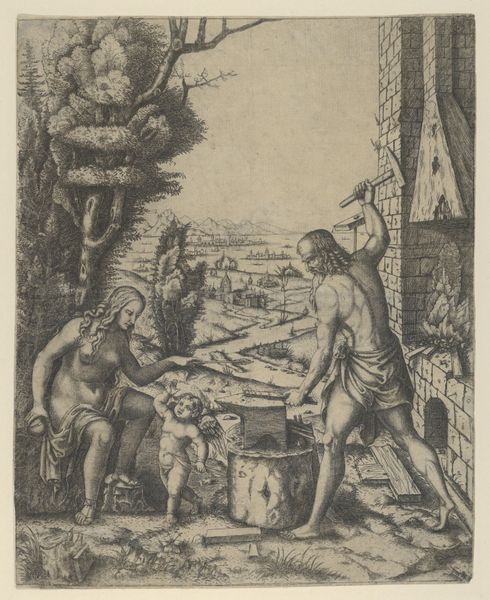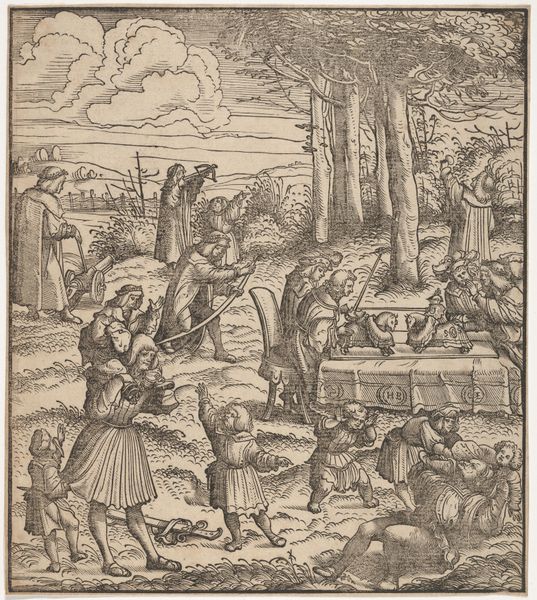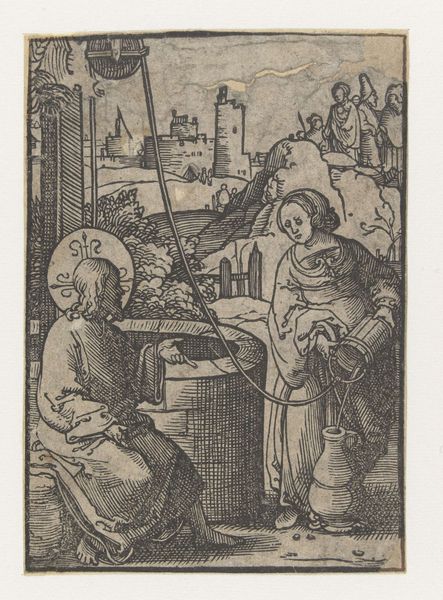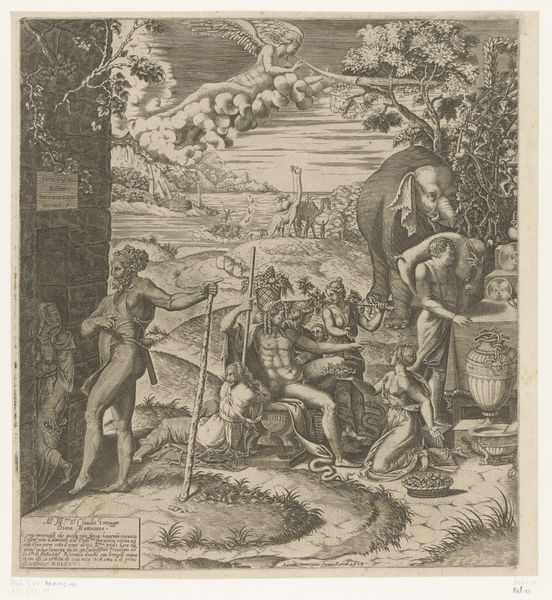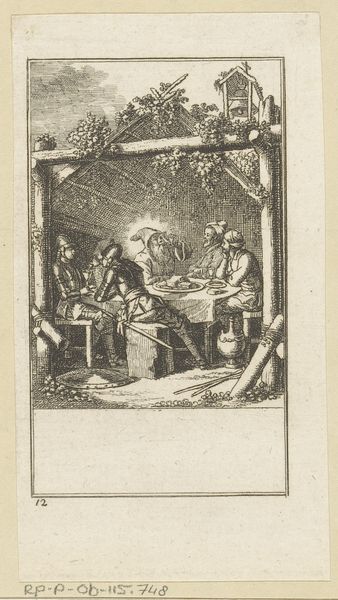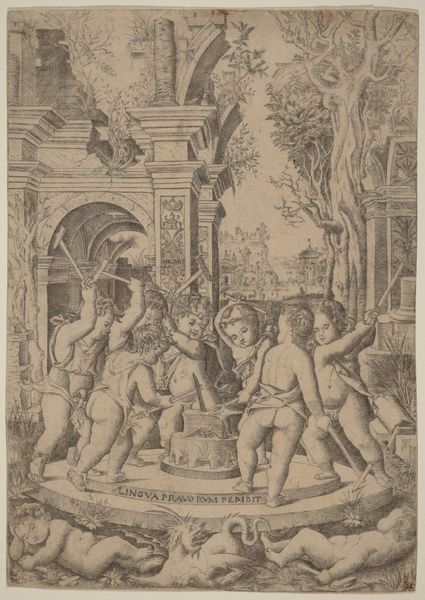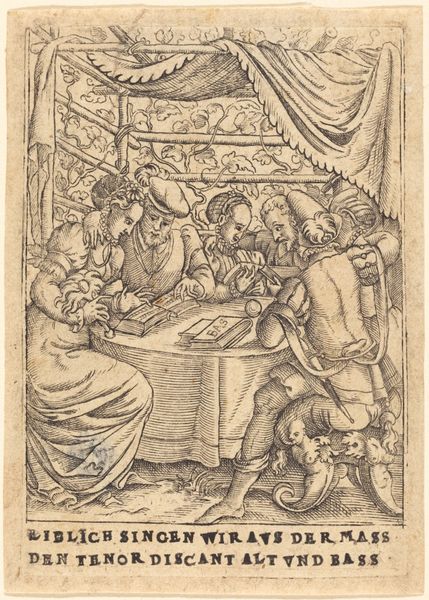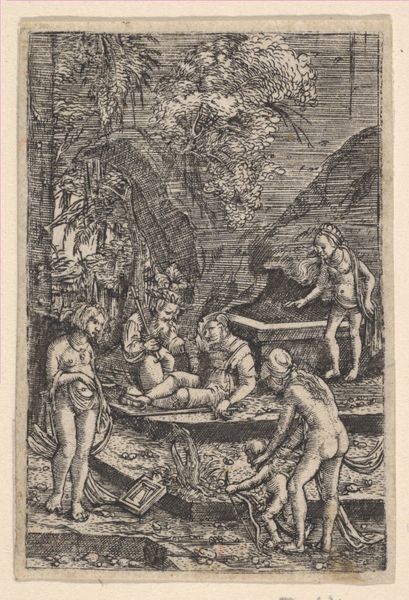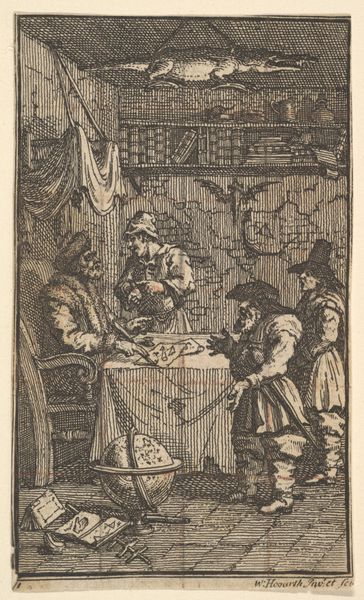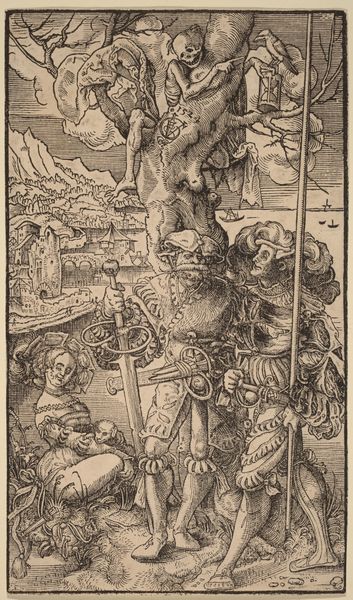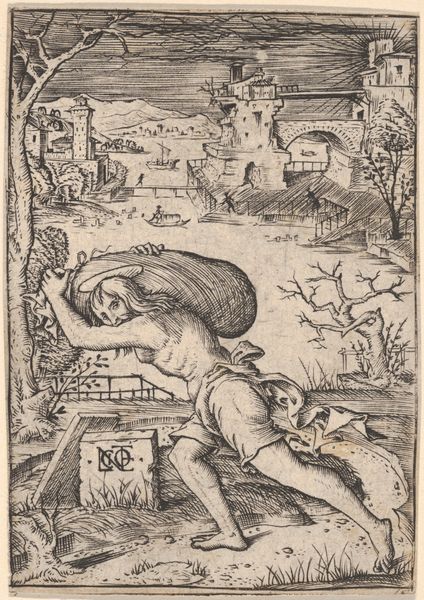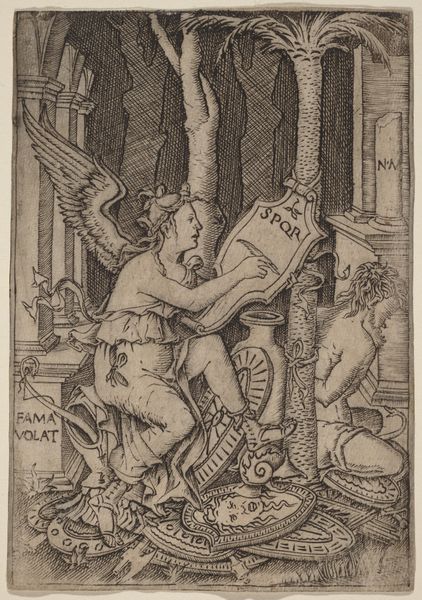
print, engraving
#
ink drawing
# print
#
figuration
#
line
#
history-painting
#
italian-renaissance
#
nude
#
engraving
Copyright: National Gallery of Art: CC0 1.0
Curator: Editor: So, here we have Marcantonio Raimondi's "Vulcan, Venus, and Eros," created in 1508. It’s an engraving. There’s such a contrast between the soft bodies and the sharp lines used to create them. What’s your interpretation of this piece? Curator: Raimondi’s choice to depict this mythological scene isn't just an aesthetic one. Consider the power dynamics at play. Vulcan, the divine blacksmith, is actively working while Venus observes with Eros nearby. How does this positioning challenge or reinforce existing social hierarchies of labor and leisure in the Renaissance? Editor: I guess Vulcan, although a god, is shown in the act of labor, which isn't usually how gods are represented, right? Curator: Precisely! And what does it mean that Venus is present, almost supervising? Remember, the Renaissance was a period of both artistic flourishing and rigid social structures. By placing Venus in a position of relative authority and removing any garment from her form, Raimondi is not only playing with notions of beauty but also questioning contemporary gender roles and perhaps subtly critiquing male artistic dominance through the female nude's power. Editor: That’s so interesting; I hadn't considered how the positioning reflects societal roles and challenges those roles. Curator: Think about the original audience too. Prints like this circulated widely. What kind of conversations do you imagine this artwork sparked amongst different viewers across society? Editor: It’s a really interesting idea that art like this one has historical impact on power dynamics. It shows how we can discuss contemporary inequalities by re-examining old works of art. Curator: Exactly, understanding the historical context empowers us to analyze the work through a different and modern perspective.
Comments
No comments
Be the first to comment and join the conversation on the ultimate creative platform.
